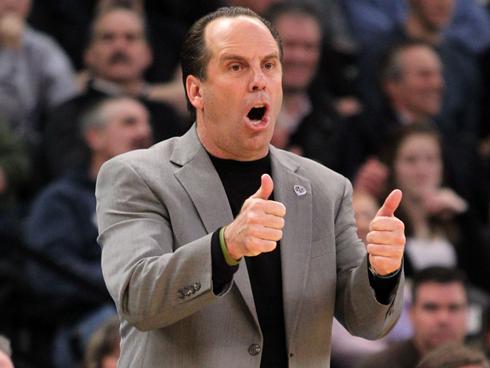Posted by zhayes9 on February 13th, 2012
Zach Hayes is an editor, contributor and bracketologist for Rush the Court.
Now that football season is finally in the rear view mirror, college basketball has stepped into its rightful place on the national radar. The previous week has brought us a slew of thrilling rivalries, intra-conference showdowns and last-second finishes in the endless pursuit to decipher which teams have the capabilities to make a deep March run. The rigors of conference play, especially in hostile environments facing a despised foe, exposes flaws hidden early in the season by facing inferior opposition. In the last week alone, my perception of a number of top teams has altered drastically. Here are the lessons gleaned from a week of non-stop college basketball viewing:

John Calipari might have his best team in Lexington
A zone defense could be Kentucky’s kryptonite: Containing the Wildcats’ absurd quickness off the dribble, Teague-to-Davis pick-and-roll dunks and overall athleticism is nearly impossible playing straight man defense. Vanderbilt attempted to stay in front of Kentucky’s guards with the pillowy soft man-to-man defense of Brad Tinsley and John Jenkins early in the first half Saturday and failed miserably. Faced with a double-digit deficit, a zone defense combined with hot shooting turned the tide. A zone not only limits ball screening and penetration, but it goads Kentucky into firing up threes, where only Doron Lamb is an elite marksman from deep. Luckily for Calipari and the Cats, neither Mississippi State nor Florida – their two toughest road tests on the docket the remainder of the season – utilizes a zone the majority of the time. A matchup with Syracuse on April 2 would be fascinating.
Ohio State’s perimeter play is a definite concern: Saturday’s unsightly home loss to Michigan State – coupled with Kentucky’s near-invincibility since Christian Watford’s game-winner in December – was the first time I legitimately re-considered my prevailing thought that the Buckeyes would play for a national title April 2 in New Orleans. The Spartans are a top-ten outfit and special on the defensive end, but I’m unconvinced that Ohio State’s guards can provide enough in the scoring column to help the overworked Jared Sullinger in the post. Defenses can go under screens and sag off Aaron Craft, Lenzelle Smith plays due to his defensive prowess and William Buford’s declining offensive rating and effective FG% back up his inconsistent shooting outputs. If Sullinger runs into another physical frontcourt presence similar to Sparty’s Adreian Payne – or UK’s Josh Harrellson dating back to last year’s Sweet 16 – the Bucks may fall short of their perennially lofty goals.
Tyler Zeller is the best player in the ACC: In the battle of the two best overall players in the conference, Carolina’s Zeller (25 points, 9 rebounds, 3 assists, 3 steals) outplayed Virginia’s Mike Scott (18 points, 6 rebounds, 0 assists, 0 steals) to take the lead in ACC POY discussions. Zeller’s value to the Heels isn’t limited to the box score; the 7-foot center routinely tops UNC coaching staff’s defensive rankings and is one of the top charge-takers in the nation. His ability to run rim-to-rim and spark Carolina’s patented fast break leads to an abundance of easy baskets and that left shoulder jump hook is often unstoppable. His marvelous first half performance against Duke on Wednesday is easily lost in the shuffle due to end-of-game heroics, but he single-handedly kept Carolina within striking distance with his play on both ends. Scott means more to the Cavs, but Zeller is the best player in the league.
Read the rest of this entry »
| commentary
| Tagged: creighton, florida, kansas, kentucky, louisville, miami, michigan state, mike brey, ohio state, rick pitino, tom izzo, tyler zeller, wichita state
Share this story


















































